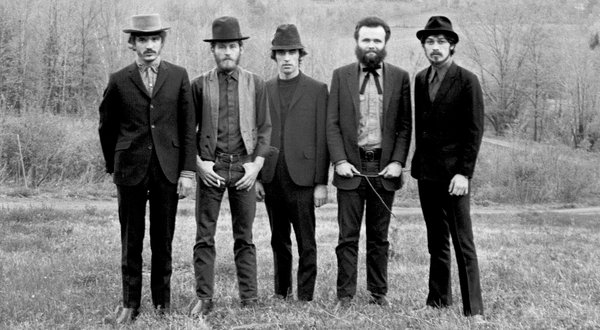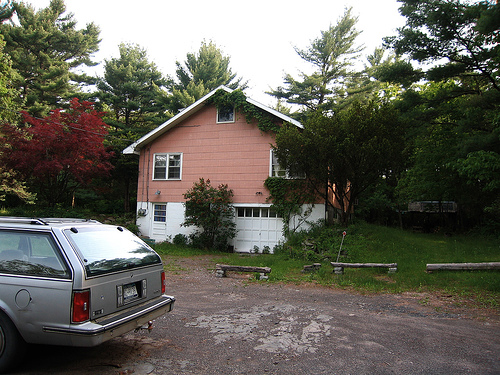Stoneman’s Cavalry

(The Band, Levon Helm second from left.)
The voices of pop music of the 1950s, sixties and seventies were stilled yesterday. The one that came as the larger shock- not the eternal teenager Dick Clark- but the one that signified our voice, the one of inchoate rage and calls for revolution.
Which is sort of queer, actually, since Lavon Helm was all about the roots and the struggle of the hardscrabble American South. He was the Arkansas voice for several incarnations of a Canadian band. It was a long road from Turkey Scratch, AK, to Woodstock, NY.
What was that first name again? His Canadian band mates had difficulty in pronouncing it, and Levon went with the flow and changed it, eh?
The gritty-voiced Arkansan drummer of The Band, succumbed to cancer at the memorial Sloan-Kettering Cancer Center in New York City. It was not that far from his adopted home in Woodstock, NY. He was seventy-one, just a decade older than my little cohort, and his passing suggests that the clock is running faster than I had previously thought.
Helm was a junior in High School when Arkansas-born rockabilly singer Ronnie Hawkins heard him play the drums and hired him as a drummer for his band. Too young to drink legally, Lavon relocated with Hawkins to Ontario, Canada where the gigs paid better. “Ronnie Hawkins and the Hawks” played six nights a week in Ontario. They were moderately successful- good enough to intersect with Dick Clark’s rock-and-roll money machine and appear on American Bandstand.
In 1963 the Hawks were tied of taskmaster and front man Ronnie Hawkins and started their own bar-band as “Levon and the Hawks,” among other names. They were sought after session musicians, a bit like the legendary LA session group “The Wrecking Crew,” who are actually the people who provided the driving beat of the Beach Boys classic “Pet Sounds.”
It is the session roustabouts of the music world who define the sound of the rock epochs, and the Band was one of the best.
When Bob Dylan electrified us all by going electric at the Newport Folk Festival in 1965, he hired Levon and fellow Hawks Rick Danko, Garth Hudson, Richard Manuel and Jaime “Robbie” Robertson as his back-up band for national and international tours.

(The modest pink house that spawned a legend, and gave its name to Casa Socotra, the other Big Pink.)
They continued their collaborations for decades after, but it was the two albums the Levon and the boys recorded as The Band that stand as monuments in the rock pantheon. “Music From Big Pink” played off the mystery of the then-rumored Dylan sessions. The one that came after was a surreal trip through the American South and frontier, the eponymous second album “The Band.”
Along with “Up on Cripple Creek” and “Rag Mama Rag,” Levon invited us into the Silver Rush of Colorado, and then to the devastation of a defeated but still proud South at the end of the bloodiest conflict in American history. Robbie Robertson wrote it, but it will be forever associated with Levon Helm’s vocal artistry and accent.
That bugged me at the time, and has all down through the years since I first heard the plaintive lament to a society scourged by war and privation. Depending on whose version you are listening to, the lyrics can be heard as:
“Virgil Caine is my name
And I served on the Danville Train
Till “So Much” cavalry came- or wait, “Stonewall’s Calvary?”
And tore up the tracks again…..”
Whatever, right? Just a song, right?
But “so much” doesn’t make much sense. And Stonewall Jackson never had any Cavalry. His brigade was an infantry outfit, and their marching skills were renowned as “Jackson’s Foot Cavalry.” No horses. And Jackson was killed at the battle of Chancellorsville in 1863, just down the road from Refuge Farm. And why would he be tearing up the tracks in the Confederacy, anyway?
But Robbie and Levon were right. The correct lyric is “Stoneman’s Calvary,” and therein lies a harrowing tale, if you haven’t heard of it.
(Union Major General George Stoneman with unwavering- and unforgiving gaze.)
Six-foot-four-inch Major General George Stoneman was ordered by General US Grant to take 6,000 mounted Union troops to form up just outside Mossy Creek, TN, and conduct independent raiding against military and civilian targets in northwest North Carolina and southwest Virginia.
It was 147 years ago this month, and the lyrics may be muddied but the emotion is authentic and real. Stoneman’s orders were to ‘destroy, but not to fight battles.’ The war was winding down, but Sherman’s March to the Sea had demonstrated the effectiveness of the strategy of total war: the punishment of Southern civilians to ensure complete capitulation.
Stoneman’s Cavalry set out on 24 March to set the torch to the enemy.
Robert E. Lee’s Army of Northern Virginia surrendered at Appomattox Court House on 09 April, 1865, the last of his troops being North Carolinians fighting mostly to go home. Stoneman’s cavalry continued to burn their way across the countryside.
Unconditional Surrender Grant correctly believed that Stoneman’s raid, in conjunction with a simultaneous raid by Northern cavalry in Alabama, would ‘leave nothing for the rebellion to stand upon.’
He was right. There was little organized Confederate resistance remaining, though that did not stop the pillaging.
The march to the Virginia border took Stoneman’s men through early April. Lee was fleeing west after the fall of Petersburg and Richmond. Stoneman’s main body occupied Christianburg, VA on 05 April, and the destruction began in earnest as the cavalry tore up the tracks to the railroad and hurled them onto bonfires to heat and twist them into useless steel pretzels. Fearing no opposition, Stoneman divided his forces in the face the civilians, and set four columns to burn their way across Virginia to the Tar Heel State.
Stoneman’s command was reunited in Danbury, NC, the day Lee threw in the towel. The war may have been over to the north, but the destruction continued. The excursion into Virginia disarmed the remaining militia of North Carolina, thinking raid was done.
It wasn’t.
Stoneman’s Calvary returned to Asheville,NC, after raiding across the state for almost two weeks after Appomattox. His men sacked the town on April 26, long after Abraham Lincoln had taken a steam packet down to the James River and visited the office of his opposite number, Jefferson Davis, and joined the Ages at Ford’s Theater on the 14th.
So, if you think about Virgil Caine, think about working on the Danville Train when Stoneman’s calvary comes to visit.
I am still working on:
“I’m with my wife in Tennessee,
When one day she calls to me:
Virgil, quick come see,
There goes the Robert E. Lee…”
It is an awkward phrase, that one. I cannot find a locomotive named for the defeated general, though there were later all manner of things named for the courtly confederate field marshal, including trains and the Duke’s of Hazrd Charger RT 440.
The one that springs to mind as contemporary is the Rebel Commerce Raider, CSS Robert E. Lee.
That ship was captured by Union blockaders in 1863, though. So I don’t know how Mr. Cane’s wife could have seen it in 1865, hundreds of miles inland.
So, I guess I will have to contact Mr. Robertson, if I want to know. Can’t ask Levon.
Too damn bad. But I will keep listening, though, at least until Stoneman’s cavalry comes again.
Copyright 21012 Vic Socotra
www.vicsocotra.com
